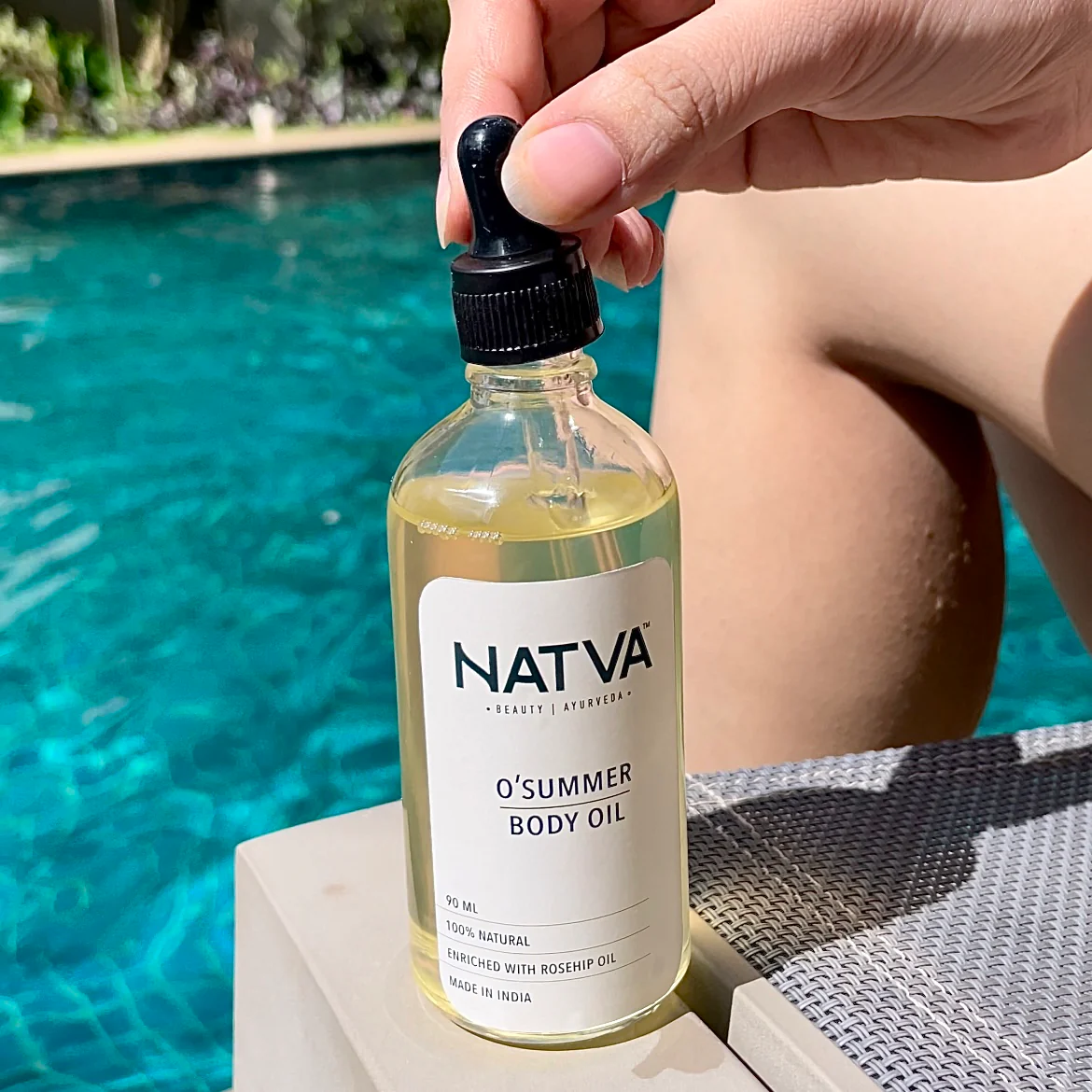
Body Oil vs Lotion: Which Is Better for Your Skin
The Battle of Skin Hydration
Choosing between body oil vs lotion can be tricky. Both products aim to moisturize and nourish the skin. However, they differ in composition, application, and benefits. This guide will explore the pros and cons of each option. It will help readers make an informed decision for their skincare routine.
Understanding Body Oils
Body oils are concentrated moisturizers. They contain natural or synthetic oils. These oils mimic the skin’s natural sebum. Popular ingredients include jojoba, argan, and coconut oil. Body oils create a protective barrier on the skin. This barrier locks in moisture and prevents water loss. The result is smooth, hydrated skin that glows.
Body oils absorb quickly into the skin. They don’t leave a greasy residue when applied correctly. Many people prefer body oils for their natural ingredients. These oils often contain antioxidants and vitamins. Such nutrients nourish the skin deeply. Body oils work well for dry or mature skin types. They provide intense hydration and help improve skin elasticity.
However, body oils have some drawbacks. They can be messy to apply. The oil can stain clothing if not fully absorbed. Some people find body oils too heavy for their skin type. This is especially true for those with oily or acne-prone skin. Body oils may exacerbate these conditions. Additionally, body oils typically don’t contain SPF. This means users need to apply sunscreen separately for sun protection.
The Lowdown on Lotions
Lotions are emulsions of water and oil. They contain a mix of ingredients. These include humectants, emollients, and occlusives. Humectants, like glycerin, attract water to the skin. Emollients, such as shea butter, soften the skin. Occlusives, like petrolatum, create a barrier to prevent moisture loss. This combination makes lotions versatile for various skin types.
Lotions are easy to apply and absorb quickly. They come in a wide range of formulations. This allows users to choose products tailored to their specific skin concerns. Many lotions contain additional beneficial ingredients. These may include antioxidants, vitamins, and SPF. Such additions provide extra skincare benefits and sun protection. Lotions work well for normal to slightly dry skin. They offer balanced hydration without feeling heavy.
However, lotions have their limitations. They may not provide enough hydration for extremely dry skin. Some lotions contain synthetic fragrances or preservatives. These ingredients can irritate sensitive skin. Water-based lotions may evaporate quickly in dry environments. This can leave the skin feeling dry again soon after application. Additionally, some people dislike the texture of lotions. They may find them too light or not moisturizing enough.
Comparing Absorption and Skin Feel
Body oils and lotions differ in how they interact with the skin. Body oils penetrate deeply into the skin’s layers. They mimic the skin’s natural oils, allowing for easy absorption. This deep penetration can lead to longer-lasting hydration. Body oils often leave the skin feeling silky and smooth. However, some people may find the initial oily texture uncomfortable.
Lotions, on the other hand, have a lighter feel. They absorb more quickly due to their water content. This rapid absorption can provide immediate relief to dry skin. Lotions typically don’t leave a residue on the skin. This makes them ideal for daytime use or under clothing. However, the hydration from lotions may not last as long as that from body oils. Users might need to reapply lotions more frequently throughout the day.
The choice between body oil and lotion often comes down to personal preference. Some people enjoy the luxurious feel of body oils. Others prefer the quick absorption and versatility of lotions. Climate and skin type also play a role in this decision. In humid environments, lotions may be sufficient. In dry climates, body oils might provide better protection against moisture loss.
Ingredient Considerations
The ingredients in body oils and lotions can significantly impact their effectiveness. Body oils often contain fewer ingredients. They typically consist of one or more plant-based oils. These oils are rich in fatty acids and vitamins. Such nutrients can help nourish and repair the skin. Common body oil ingredients include jojoba oil, argan oil, and sweet almond oil. These oils closely resemble the skin’s natural sebum. This similarity allows them to penetrate deeply and effectively moisturize the skin.
Lotions, in contrast, have more complex formulations. They contain a mix of water, oils, and other ingredients. These additional components can provide various benefits. For example, many lotions contain hyaluronic acid. This ingredient helps attract and retain moisture in the skin. Lotions may also include antioxidants like vitamin E or C. These antioxidants can help protect the skin from environmental damage. Some lotions incorporate alpha-hydroxy acids (AHAs) or beta-hydroxy acids (BHAs). These ingredients can help exfoliate the skin and improve texture.
When choosing between body oil vs lotion, consider individual skin needs. Those with sensitive skin might prefer simpler body oil formulations. People looking for targeted skincare benefits might opt for specialized lotions. It’s essential to read ingredient lists carefully. This practice helps avoid potential allergens or irritants. Both body oils and lotions can offer excellent skincare benefits. The key is finding a product with ingredients that work well for your specific skin type and concerns.
Application Techniques and Timing
The application of body oils and lotions differs in technique and timing. Body oils are best applied to damp skin. This approach helps lock in moisture and enhances absorption. Warm a small amount of oil between the palms before applying. Gently massage the oil into the skin using upward strokes. Focus on dry areas like elbows, knees, and feet. Allow the oil to absorb for a few minutes before dressing. Many people prefer applying body oils after a shower or bath. This timing capitalizes on the skin’s increased receptiveness to moisture.
Lotions can be applied to dry or slightly damp skin. Pump or squeeze a small amount of lotion into the palm. Spread it evenly over the skin using circular motions. Pay extra attention to dry or rough areas. Lotions typically absorb quickly, allowing for immediate dressing. They can be applied multiple times throughout the day as needed. Many people use lotions in the morning as part of their daily routine. Some also apply lotion before bed to hydrate skin overnight.
The frequency of application varies for both products. Body oils often provide longer-lasting hydration. This means they may only need to be applied once a day or every other day. Lotions, being lighter, might require more frequent application. Some people reapply lotion to dry areas several times a day. The climate, skin type, and individual needs influence application frequency. Listen to your skin and adjust usage accordingly. Proper application techniques ensure maximum benefits from both body oils and lotions.

Cost and Value Considerations
When comparing body oils and lotions, cost and value play significant roles. Body oils often come in smaller containers. However, a little goes a long way with these concentrated products. High-quality body oils can be expensive. This is especially true for those containing rare or exotic ingredients. However, their long-lasting effects may justify the cost for some users. Body oils typically require less frequent application than lotions. This factor can make them more economical in the long run.
Lotions generally come in larger containers. They often cost less per ounce than body oils. However, users may go through lotion more quickly. This is due to the need for more frequent application. Many affordable, effective lotions are available in drugstores. High-end lotions with specialized ingredients can be pricier. The wide range of options allows consumers to find lotions at various price points. Some lotions offer additional benefits like SPF or anti-aging properties. These multi-tasking products can provide good value for money.
When evaluating cost and value, consider personal skincare needs and budget. Factor in how often the product needs to be repurchased. Think about any additional products required to achieve desired results. For example, using body oil might necessitate a separate sunscreen purchase. A lotion with built-in SPF could be more cost-effective in this case. Both body oils and lotions can offer good value. The best choice depends on individual preferences, skin type, and financial considerations.



